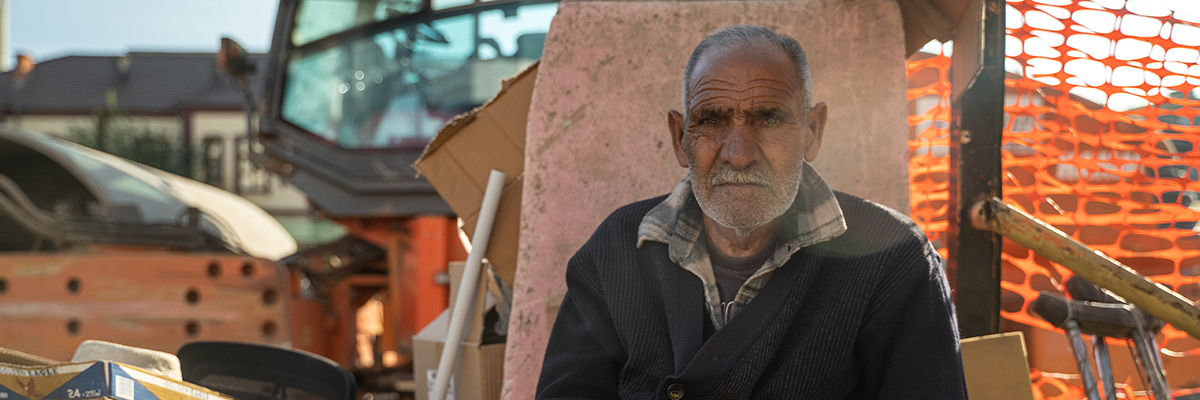“This is a celebration of them directly,” artist Helen Bur says as she describes her new six-story high painting in Ferizaj, Kosovo. Warm and idiosyncratic, it is a candid photo of local youth whom she paints in this once war-torn area. Even today, about 20 years after the end of hostilities and with the enormous “peace-keeping” US Camp Bondsteel nearby, a mixture of Albanians, Serbs, and Roma all are rebuilding a common life in the shadow of not-so-past events.
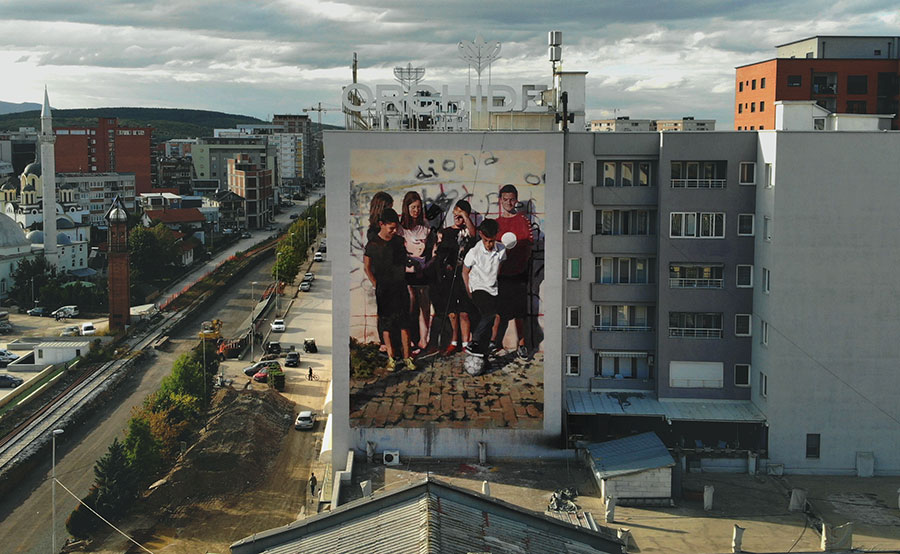
Given such taut social politics that govern the memories and leave their mark on the daily lives of residents, Scottish film maker Doug Gillen jumped in to record the observations and experiences of artists and local creators who were there for a mural festival. One current fashion for murals created for these public art events is to be “responsive” to the community. Undoubtedly you can see that many of these are reflecting the environment – including more literally the botanicals of the region.
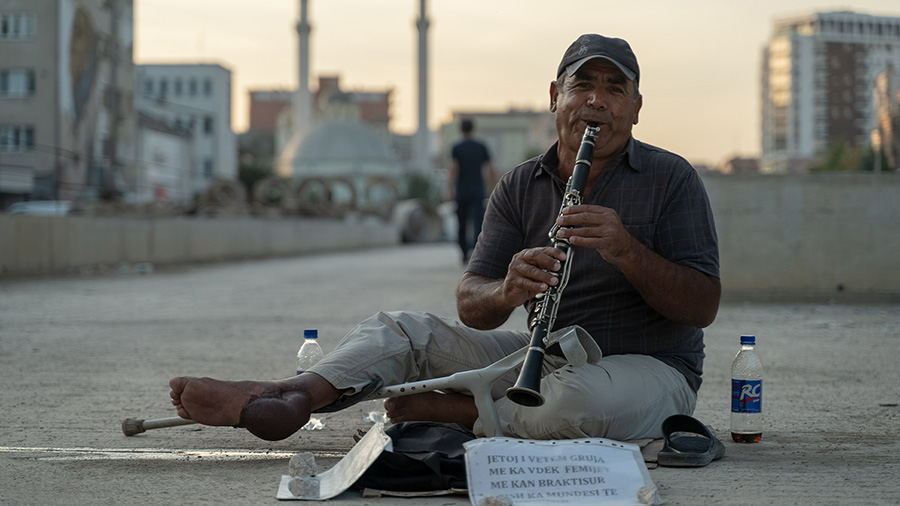
Elsewhere Gillen captures the stories of locals, including one resident who recalls being ‘usurped’ by a ‘hooligan’ who took over her attic and who brought sex workers there during the conflict. You can sense the relief she feels to finally tell her story in a public way. These singular stories provide clarity and can be rather jewel-like.
Muralist Ampparito touches on the denial that is also in play as he describes his mural which addresses the ultimate non-controversial topic bound to engage a respectable constituency: weather.
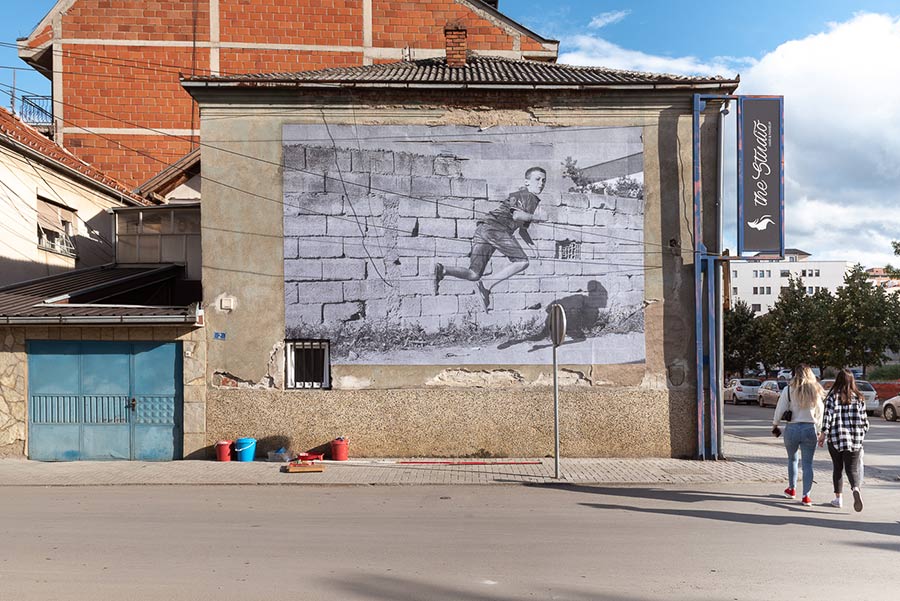
“When you arrive at a place that you don’t know and you want to talk about serious stuff” the artist explains with a smile, “I think you have to be careful.” For both the sensitive and the coarse, it is a given; whether its political or personal self-censorship, it will enter the life of an artist at one point. “It’s like when you don’t talk about something, sometimes you say more than if you don’t talk about it.”
You can see how the commitment to acknowledging and participating with community is realized by a talented collection of artists – like the aforementioned Ampparito, Aruallan, Micheal Beitz, Helen Bur, Emilio Cerezo, Doa Oa, Alba Fabre, Ivan Floro, Maria Jose Gallardo, Retry One, Zane Prater, Vlada Trocka and Axel Void.
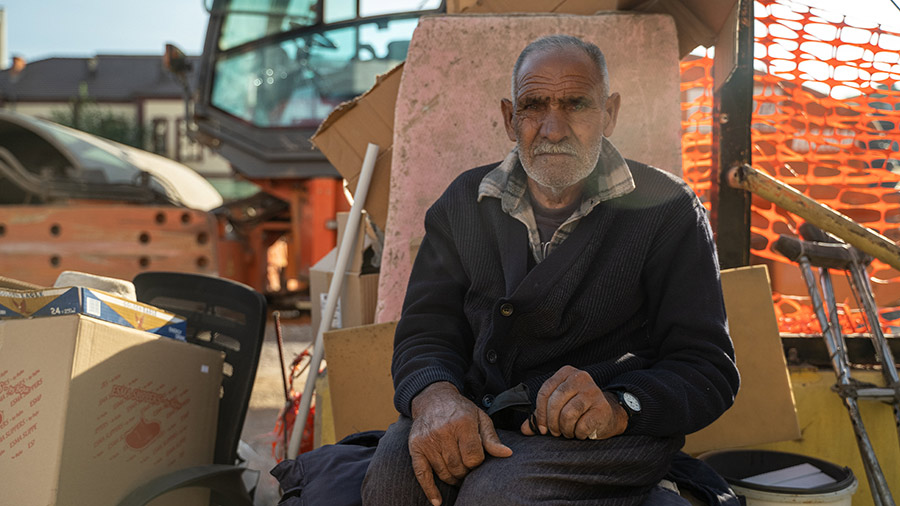
Artist and organizer Axel Void may embody similar contradictions as he describes goals of the pro-artist organization named after himself. “In a way it’s a similar idea to every, like, Void Projects – which is pretty much trying to cut out the middle man and trying to have a more direct interaction between the artist and the people.” That being said, the annual mural festival relies on private and institutional partners, staff, professionals, and the efforts of volunteers to mount it – as well as a biosphere of media professionals and amateurs and private platforms to help Void and the artists get the word out about their creations around the globe.
Executive producer Lebibe Topalli rests her finger carefully upon the local pulse, and she parses words gently when describing the challenges of mounting this event today as she thinks of Kosovo of two decades ago. To even have considerations regarding the ‘art world’ at an earlier time “would have been a luxury,” she says.
“The difference is best recognized by the people who have experienced it.” As the debate in the street art world continues about the elusive ideal mix of factors for the perfect mural festival, filmmaker Gillen helps capture those who struggle as well with their sense of responsibility to the community.
Produced by Fifth Wall TV in collaboration with the Kosovo Mural Festival and Void Projects
Film Executive Producer Charlotte Pyatt
 BROOKLYN STREET ART LOVES YOU MORE EVERY DAY
BROOKLYN STREET ART LOVES YOU MORE EVERY DAY